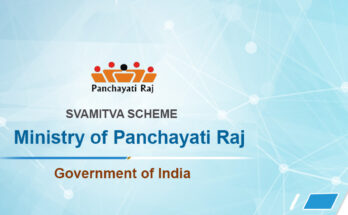Delta and Delta Plus Variants: Frequently Asked Questions.
Vaccines and COVID Appropriate Behaviour can help us fight the pandemic.
Secretary, Department of Biotechnology; Director-General, Indian Council of Medical Research; and Director, National Centre for Disease Control have answered many questions about the Delta and Delta Plus variants of the SARS-Cov-2 virus. PIB has curated the answers, given at a COVID Media Briefing held by the Health Ministry on June 25, 2021.
Why does a virus mutate?
Virus by its very nature mutates. It is part of its evolution. The SARS-Cov-2 virus is a single-stranded RNA virus. So, changes in the genetic sequence of the RNA are mutations. The moment a virus enters its host cell or a susceptible body, it starts replicating. When the spread of infection increases, the rate of replication also increases. A virus that has got a mutation in it is known as a variant.
What is the impact of mutations?
The normal process of mutations begins to impact us when it leads to changes in transmission levels or on treatment. Mutations can have positive, negative or neutral effects on human health.
Negative impacts include clustering of infections, increased transmissibility, ability to escape immunity and infect someone who has prior immunity, neutralization escape from monoclonal antibodies, improved binding to lung cells and increased severity of infection.
Positive impacts can be that the virus becomes non-viable.
Why are frequent mutations seen in the SARS-CoV-2 virus? When will the mutations stop?
SARS-CoV-2 can mutate due to the following reasons:
- Random error during replication of the virus
- Immune pressure faced by viruses after treatments such as convalescent plasma, vaccination or monoclonal antibodies (antibodies produced by a single clone of cells with identical antibody molecules)
- Uninterrupted transmission due to lack of COVID-appropriate behaviour. Here the virus finds an excellent host to grow and becomes fitter and more transmissible.
The virus will continue to mutate as long as the pandemic remains. This makes it all the more crucial to follow COVID appropriate behaviour.
What are Variants of Interest (VoI) and Variants of Concern (VoC)?
When the mutations happen – if there is any previous association with any other similar variant which is felt to have an impact on public health – then it becomes a Variant under Investigation.
Once genetic markers are identified which can have an association with receptor binding domain or which have an implication on antibodies or neutralizing assays, we start calling them as Variants of Interest.
The moment we get evidence for increased transmission through field-site and clinical correlations, it becomes a Variant of Concern. Variants of concern are those that have one or more of the following characteristics:
- Increased transmissibility
- Change in virulence/ disease presentation
- Evading the diagnostics, drugs and vaccines
The 1st Variant of Concern was announced by the UK where it was found. Currently, there are four variants of concern identified by the scientists – Alpha, Beta, Gamma and Delta.
What are Delta and Delta Plus variants?
These are the names given to variants of the SARS-CoV-2 virus, based on the mutations found in them. WHO has recommended using letters of the Greek Alphabet, i.e., Alpha (B.1.1.7), Beta (B.1.351), Gamma (P.1), Delta (B.1.617), etc., to denote variants, for easier public understanding.
Delta variant, also known as SARS-CoV-2 B.1.617, has about 15-17 mutations. It was first reported in October 2020. More than 60% of cases in Maharashtra in February 2021 pertained to delta variants.
It is the Indian scientists who identified the Delta Variant and submitted it to the global database. Delta variant is classified as a Variant of Concern and has now spread to 80 countries, as per WHO.
Delta variant (B.1.617) has three subtypes B1.617.1, B.1.617.2 and B.1.617.3, among which B.1.617.1 and B.1.617.3 have been classified as Variant of Interest, while B.1.617.2 (Delta Plus) has been classified as a Variant of Concern.
The Delta Plus variant has an additional mutation in comparison to the Delta variant; this mutation has been named the K417N mutation. ‘Plus’ means an additional mutation has happened to the Delta variant. It does not mean that the Delta Plus variant is more severe or highly transmissible than the Delta variant.
Why has the Delta Plus Variant (B.1.617.2) been classified as a Variant of Concern?
The Delta Plus variant has been classified as a Variant of Concern because of the following characteristics:
- Increased transmissibility
- Stronger binding to receptors of lung cells
- Potential reduction in monoclonal antibody response
- Potential post-vaccination immune escape
How often are these mutations studied in India?
Indian SARS-CoV-2 Genomics Consortium (INSACOG) coordinated by the Department of Biotechnology (DBT) along with Union Health Ministry, ICMR, and CSIR monitor the genomic variations in the SARS-CoV-2 on a regular basis through a pan India multi-laboratory network. It was set up with 10 National Labs in December 2020 and has been expanded to 28 labs and 300 sentinel sites from where genomic samples are collected. The INSACOG hospital network looks at samples and informs INSACOG about the severity, clinical correlation, breakthrough infections and re-infections.
More than 65,000 samples have been taken from states and processed, while nearly 50,000 samples have been analysed of which 50% have been reported to be Variants of Concern.
On what basis are the samples subjected to Genome Sequencing?
Sample selection is done under three broad categories:
1) International passengers (during the beginning of the Pandemic)
2) Community surveillance (where RT-PCR samples report CT Value less than 25)
3) Sentinel surveillance – Samples are obtained from labs (to check transmission) and hospitals (to check severity)
When there is any public health impact noticed because of genetic mutation, then the same is monitored.
What is the trend of Variants of Concern circulating in India?
As per the latest data, 90% of samples tested have been found to have Delta Variants (B.1.617). However, the B.1.1.7 strain which was the most prevalent variant in India in the initial days of the pandemic has decreased.
Why is public health action not taken immediately after noticing mutations in viruses?
It is not possible to say whether the mutations noticed will increase transmission. Also, until there is scientific evidence that proves a correlation between the rising number of cases and variant proportion, we cannot confirm there is a surge in the particular variant. Once mutations are found, analysis is made week on week to find if there is any such correlation between the surge of cases and variant proportion. Public health action can be taken only after scientific proofs for such correlation are available.
One such correlation is established, this will help greatly to prepare in advance when such a variant is seen in another area/region.
Do COVISHIELD and COVAXIN work against the variants of SARS-CoV-2?
Yes, COVISHIELD and COVAXIN are both effective against the Alpha, Beta, Gamma and Delta variants. Lab tests to check vaccine effectiveness on Delta Plus Variant are ongoing.
Delta Plus Variants: The virus has been isolated and is being cultured now at ICMR’s National Institute of Virology, Pune. Laboratory tests to check vaccine effectiveness are ongoing and the results will be available in 7 to 10 days. This will be the first result in the world.
What are the public health interventions being carried out to tackle these variants?
The public health interventions needed are the same, irrespective of the variants. The following measures are being taken:
- Cluster containment
- Isolation & Treatment of cases
- Quarantining of contacts
- Ramping up vaccination
Do public health strategies change as the virus mutates and more variants arise?
No, public health prevention strategies do not change with variants.
Why is continuous monitoring of mutations important?
Continuous monitoring of mutations is important to track potential vaccine escape, increased transmissibility and disease severity.
What does a common man do to protect him/her from these Variants of Concern?
One must follow COVID Appropriate Behaviour, which includes wearing a mask properly, washing hands frequently and maintaining social distancing.
The second wave is not over yet. It is possible to prevent a big third wave provided individuals and society practise protective behaviour.
Further, Test Positivity Rate must be closely monitored by each district. If the test positivity goes above 5%, strict restrictions must be imposed.
डेल्टा आणि डेल्टा प्लस व्हेरिएन्टस : वारंवार विचारले जाणारे प्रश्न
लस आणि कोविड प्रतिबंधक सुयोग्य वर्तन आपल्याला महामारीशी लढायला मदत करू शकते.
जैव तंत्रज्ञान विभागाचे सचिव, भारतीय वैद्यकीय संशोधन परिषदेचे महासंचालक, आणि राष्ट्रीय रोग नियंत्रण केंद्राच्या संचालकानी सार्स सीओव्ही -2 विषाणूच्या डेल्टा आणि डेल्टा प्लस व्हेरिएन्ट बद्दल पडलेल्या अनेक प्रश्नांची उत्तरे दिली आहेत. आरोग्य मंत्रालयाने 25 जून रोजी आयोजित केलेल्या कोविड संबंधी पत्रकार परिषदेत दिलेली उत्तरे पत्र सूचना कार्यालयाने सादर केली आहेत.
प्र. विषाणू आपले रूप का बदलतो?
विषाणू हा त्याच्या स्वभावानुसार बदलतो. तो त्याच्या उत्क्रांतीचा एक भाग आहे. सार्स -सीओव्ही -2 विषाणू हा सिंगल -स्ट्राँडेड आरएनए विषाणू आहे. त्यामुळे आरएनएच्या जनुकीय अनुक्रमातील बदल म्हणजेच उत्परिवर्तन ( म्युटेशन ) होय. ज्या क्षणी एखादा विषाणू त्याच्या यजमान पेशीमध्ये किंवा संवेदनक्षम शरीरात प्रवेश करतो तेव्हा त्याची पुनरावृत्ती व्हायला सुरवात होते. जेव्हा संक्रमणाचा प्रसार वाढतो तेव्हा प्रतिकृतीचा दर देखील वाढतो. उत्परिवर्तन झालेला विषाणूला व्हेरिएन्ट असे ओळखले जाते.
प्र. उत्परिवर्तनांचा काय परिणाम होतो?
जेव्हा संसर्गाच्या पातळीत किंवा उपचारांमध्ये बदल व्हायला सुरुवात होते तेव्हा उत्परिवर्तनांची सामान्य प्रक्रिया आपल्यावर परिणाम करायला सुरवात करते. उत्परिवर्तनांचा मानवी आरोग्यावर सकारात्मक, नकारात्मक किंवा तटस्थ परिणाम होऊ शकतो.
नकारात्मक प्रभावांमध्ये सामूहिक संक्रमण, प्रसार क्षमतेत वाढ, रोग प्रतिकारशक्ती कमी होणे आणि एखाद्या रोग प्रतिकारशक्ती असलेल्या व्यक्तीला संक्रमित करणे , मोनोक्लोनल अँटीबॉडीजचा प्रतिसाद कमी होणे ,फुप्फुसांच्या पेशींशी संयुग होण्याची अधिक क्षमता आणि संसर्गाची तीव्रता वाढणे यांचा समावेश आहे.
सकारात्मक परिणाम असा होऊ शकतो की विषाणू जिवंत राहू शकत नाही.
प्र. सार्स -सीओव्ही -2 विषाणूमध्ये वारंवार उत्परिवर्तन का दिसून येते ? उत्परिवर्तन कधी थांबेल?
सार्स -सीओव्ही -2 खालील कारणांमुळे बदलू शकतो :
- व्हायरसच्या प्रतिकृती दरम्यान यादृच्छिक त्रुटी
- कॉन्वलेसेंट प्लास्मा , लसीकरण किंवा मोनोक्लोनल अँटीबॉडीज (समान अँटीबॉडीज मोलेक्युल असलेल्या पेशींच्या एकाच क्लोनद्वारे निर्मित अँटीबॉडीज ) सारख्या उपचारानंतर विषाणूंना रोगप्रतिकारक दबावाला सामोरे जावे लागते
- कोविड-योग्य वर्तनाअभावी अखंड प्रसार. यात विषाणूच्या वाढीला पूरक वातावरण मिळते आणि तो अधिक तंदुरुस्त आणि संक्रमणक्षम बनतो.
महामारी आहे तोपर्यंत विषाणूचे उत्परिवर्तन होत राहील. त्यामुळे कोविड योग्य वर्तनाचे पालन करणे हे अधिक महत्वाचे आहे.
प्र. व्हेरिएन्ट ऑफ इंटरेस्ट (व्हीओआय) आणि व्हेरिएन्ट ऑफ कन्सर्न (व्हीओसी) काय आहेत?
जेव्हा उत्परिवर्तन होते – जर पूर्वी कोणत्याही इतर अशाच उत्परिवर्तनाशी संबंध असेल ज्याचा सार्वजनिक आरोग्यावर परिणाम होता तर – तो व्हेरिएन्ट अंडर इन्वेस्टीगेशन बनतो .
एकदा जनुकीय मार्कर ओळखले गेले ज्यांचे रिसेप्टर बाइंडिंग डोमेनशी संयोग होता किंवा ज्यांचा अँटीबॉडीज परिणाम होतो तेव्हा आपण त्यांना व्हेरिएन्ट ऑफ इंटरेस्ट म्हणून संबोधतो.
ज्या क्षणी आपल्याला फिल्ड-साइट आणि क्लिनिकल सहसंबंधांद्वारे संसर्ग वाढल्याचा पुरावा मिळतो, तेव्हा तो चिंतेचा विषय बनतो. व्हेरिएन्ट ऑफ कन्सर्न ची खालीलपैकी एक किंवा अधिक वैशिष्ट्ये आहेत:
- संक्रमणात वाढ
- तीव्रता / रोग लक्षणांत बदल
- निदान, औषधे आणि लसीकरणाला दाद न देणे
पहिल्या व्हेरिएंट ऑफ कन्सर्नची घोषणा ब्रिटनने केली होती जिथे तो सर्वप्रथम आढळला होता. सध्या अल्फा, बीटा, गामा आणि डेल्टा असे चार व्हेरिएंट ऑफ कन्सर्नचे प्रकार वैज्ञानिकांनी शोधले आहेत.
प्र. डेल्टा आणि डेल्टा प्लस व्हेरिएन्ट म्हणजे काय आहेत?
ही सार्स सीओव्ही -2 विषाणूमध्ये सापडलेल्या उत्परिवर्तनांच्या आधारे त्या विषाणूच्या रूपांना दिलेली नावे आहेत, .सर्वाना सहज समजेल यासाठी जागतिक आरोग्य संघटनेने ग्रीक वर्णमालेतली अक्षरे वापरण्याची अर्थात Alpha (B.1.1.7), Beta (B.1.351), Gamma (P.1), Delta (B.1.617),शिफारस केली आहे.
डेल्टा व्हेरियंट, ज्याला सार्स सीओव्ही -2 बी.1.617 म्हणून देखील ओळखले जाते, ज्यात सुमारे 15-17 उत्परिवर्तन आहेत. ऑक्टोबर 2020 मध्ये सर्वप्रथम तो आढळला होता. फेब्रुवारी 2021 मध्ये महाराष्ट्रात 60 % पेक्षा जास्त डेल्टा व्हेरिएंटशी संबंधित प्रकरणे आढळली आहेत.
भारतीय वैज्ञानिकानीं डेल्टा व्हेरिएंट ओळखले आणि ते जागतिक डेटाबेसला सादर केले. डेल्टा व्हेरियंटचे व्हेरिएन्ट ऑफ कन्सर्न म्हणून वर्गीकरण केले गेले आहे आणि डब्ल्यूएचओनुसार आता ते 80 देशांमध्ये पसरले आहे.
डेल्टा व्हेरियंट (B.1.617) चे तीन उप प्रकार B1.617.1, B.1.617.2 आणि B.1.617.3 आहेत, त्यापैकी B.1.617.1 आणि B.1.617.3 व्हेरिएन्ट ऑफ इंटरेस्ट म्हणून वर्गीकृत केले गेले आहे, तर बी. 1.617.2 (डेल्टा प्लस) व्हेरिएन्ट ऑफ कन्सर्न म्हणून वर्गीकृत केले आहे.
डेल्टा व्हेरियंटच्या तुलनेत डेल्टा प्लस व्हेरियंटमध्ये अतिरिक्त उत्परिवर्तन आहे; या उत्परिवर्तनास K417N उत्परिवर्तन असे नाव देण्यात आले आहे. ‘प्लस’ म्हणजे डेल्टा व्हेरिएन्ट मध्ये अतिरिक्त उत्परिवर्तन झाले. याचा अर्थ असा नाही की डेल्टा प्लस व्हेरियंट हे डेल्टा व्हेरिएंटपेक्षा अधिक तीव्र किंवा अत्यंत संसर्गक्षम असे आहे.
प्र. डेल्टा प्लस व्हेरिएंट (B.1.617.2) चे व्हेरिएंट ऑफ कन्सर्न असे वर्गीकरणं का केले आहे ?
डेल्टा प्लस व्हेरियंटला खालील वैशिष्ट्यांमुळे व्हेरिएंट ऑफ कन्सर्न म्हणून वर्गीकृत केले आहे:
- संक्रमण क्षमतेत वाढ
- फुफ्फुसांच्या पेशींशी संयोग होण्याची अधिक क्षमता
- मोनोक्लोनल अँटीबॉडी प्रतिसाद कमी होणे
- लसीकरणाला कदाचित दाद न देणे
प्र. या उत्परिवर्तनांचा अभ्यास भारतात किती वेळा झाला आहे ?
केंद्रीय आरोग्य मंत्रालय, आयसीएमआर आणि सीएसआयआर यांच्यासह जैव तंत्रज्ञान विभाग (डीबीटी) आणि सीएसआयआर समन्वयित भारतीय सार्स -सीओव्ही -2 जेनोमिक्स कन्सोर्टियम (आयएनएसएसीओजी) देशभरातील विविध प्रयोगशाळाद्वारे नियमितपणे सार्स -सीओव्ही -२ मधील जनुकातील बदलांवर देखरेख ठेवते. डिसेंबर 2020 मध्ये 10 राष्ट्रीय प्रयोगशाळांबरोबर याची स्थापना करण्यात आली. आणि 28 लॅब आणि 300 सेंटिनेल साइटपर्यंत याचा विस्तार करण्यात आला जेथून जनुकीय नमुने संकलित केले गेले आहेत . INSACOG हॉस्पिटल नेटवर्क नमुने पाहते आणि तीव्रता, क्लिनिकल परस्परसंबंध, संसर्ग, आणि पुन्हा संक्रमणांबद्दल त्यांना माहिती देते.
राज्यांमधून 65 हजारांहून जास्त नमुने घेण्यात आले आहेत आणि त्यावर प्रक्रिया केली गेली आहे, तर जवळपास 50,000 नमुन्यांचे विश्लेषण केले गेले आहे, त्यापैकी 50 टक्के व्हेरिएन्ट ऑफ कन्सर्न असल्याची नोंद केली आहे.
प्र. कोणत्या आधारावर नमुने जीनोम सिक्वेंसींगच्या अधीन आहेत?
नमुना निवड तीन विस्तृत श्रेणींमध्ये केली जाते:
1) आंतरराष्ट्रीय प्रवासी (महामारीच्या सुरुवातीच्या काळात)
2) समुदाय देखरेख (जिथे आरटी-पीसीआर नमुने सीटी व्हॅल्यू 25 पेक्षा कमी नोंदवतात)
3) सेन्टिनल देखरेख – प्रयोगशाळा (संक्रमण तपासण्यासाठी) व रुग्णालयांकडून (तीव्रता तपासण्यासाठी) नमुने घेतले जातात.
जनुकीय उत्परिवर्तनामुळे जेव्हा सार्वजनिक आरोग्यावर कोणताही परिणाम दिसून येतो तेव्हा त्याचे निरीक्षण केले जाते.
प्र. भारतात व्हेरिएन्ट ऑफ कन्सर्नचा कल काय आहे?
ताज्या आकडेवारीनुसार, तपासणी केलेल्या 90% नमुन्यांमध्ये डेल्टा व्हेरिएंट (B.1.617) असल्याचे आढळले आहे. मात्र महामारीच्या सुरुवातीच्या दिवसात देशभरात प्रादुर्भाव असलेला B.1.1.7स्ट्रेन कमी झाला आहे.
प्र. विषाणूमधील उत्परिवर्तन लक्षात आल्यानंतर सार्वजनिक आरोग्य कारवाई त्वरित का केली जात नाही?
आढळलेल्या उत्परिवर्तनांचा प्रसार वाढेल की नाही हे सांगणे शक्य नाही. तसेच, वाढत्या रुग्णांची संख्या आणि व्हेरिएन्ट प्रमाण यांच्यात परस्परसंबंध सिद्ध करणारे वैज्ञानिक पुरावे असल्याशिवाय विशिष्ट व्हेरिएन्टमध्ये वाढ असल्याचे आपण सिद्ध करू शकत नाही. एकदा उत्परिवर्तन आढळल्यास दर आठवड्यात विश्लेषण केले जाते की प्रकरणांमध्ये वाढ आणि व्हेरिएन्ट प्रमाण यांच्यात असे काही परस्परसंबंध आहेत की नाही हे पाहिले जाते. अशा परस्परसंबंधाचे वैज्ञानिक पुरावे उपलब्ध झाल्यानंतरच सार्वजनिक आरोग्य कारवाई केली जाऊ शकते.
एकदा असा परस्परसंबंध स्थापित झाल्यानंतर,हे व्हेरिएन्ट दुसर्या भागात / प्रदेशात दिसून येतात तेव्हा अगोदर तयारी करायला मदत होते.
प्र. कोविशिल्ड आणि कोव्हॅक्सिन हे सार्स -सीओव्ही -2 च्या व्हेरिएन्ट विरूद्ध प्रभावी आहेत का?
होय, कोविशील्ड आणि कोव्हॅक्सिन हे अल्फा, बीटा, गामा आणि डेल्टा व्हेरिएन्ट विरूद्ध प्रभावी आहेत. डेल्टा प्लस व्हेरिएंटवर लसीची कार्यक्षमता तपासण्यासाठी प्रयोगशाळेच्या चाचण्या सुरू आहेत.
डेल्टा प्लस व्हेरिएंट्सः आयसीएमआर च्या नॅशनल इन्स्टिटय़ूट ऑफ व्हायरोलॉजी, पुणे येथे हा विषाणू वेगळा करण्यात आला आणि त्याच्यावर कल्चर केले जात आहे. लसीचा प्रभाव तपासण्यासाठी प्रयोगशाळेच्या चाचण्या सुरू आहेत आणि निष्कर्ष 7 ते 10 दिवसात उपलब्ध होतील. जगातील हे पहिले निष्कर्ष असतील.
प्र. या व्हेरिएन्टचा सामना करण्यासाठी कोणत्या सार्वजनिक आरोग्य उपाययोजना केल्या जात आहेत ?
व्हेरिएन्टचा विचार न करता समान सार्वजनिक आरोग्यविषयक उपाययोजना आवश्यक आहेत. पुढील उपाययोजना केल्या जात आहेतः
- समूह प्रतिबंध
- रुग्णांचे अलगीकरण आणि उपचार
- संपर्कांत आलेल्यांचे विलगीकरण
- लसीकरण वाढवणे
प्र. विषाणूचे उत्परिवर्तन होत असताना आणि अधिक व्हेरिएन्ट उद्भवत असताना सार्वजनिक आरोग्य धोरणे बदलतात का ?
नाही, सार्वजनिक आरोग्य प्रतिबंधात्मक धोरणे व्हेरिएन्ट नुसार बदलत नाहीत.
प्र. उत्परिवर्तनांचे सतत निरीक्षण करणे महत्वाचे का आहे?
लस निष्प्रभ होण्याची संभाव्यता, संक्रमणक्षमतेत वाढ आणि रोगाच्या तीव्रतेचा मागोवा घेण्यासाठी उत्परिवर्तनांचे सतत निरीक्षण करणे आवश्यक आहे.
प्र . सामान्य माणूस या व्हेरिएन्ट ऑफ कन्सर्न पासून स्वतःचा बचाव करण्यासाठी काय करू शकतो ?
कोविड प्रतिबंधात्मक योग्य वर्तन केले पाहिजे , ज्यात मास्कचा व्यवस्थित वापर , वारंवार हात धुणे आणि सामाजिक अंतर राखणे समाविष्ट आहे.
दुसरी लाट अद्याप संपलेली नाही. जर व्यक्ती आणि समाज यांनी संरक्षणात्मक वर्तन केले तर तिसरी लाट रोखणे शक्य आहे .
तसेच , चाचणी सकारात्मकतेच्या दराचे प्रत्येक जिल्ह्याने बारकाईने निरीक्षण केले पाहिजे. जर चाचणी सकारात्मकतेचा दर 5% च्या वर गेला तर कठोर निर्बंध लादणे आवश्यक आहे.



